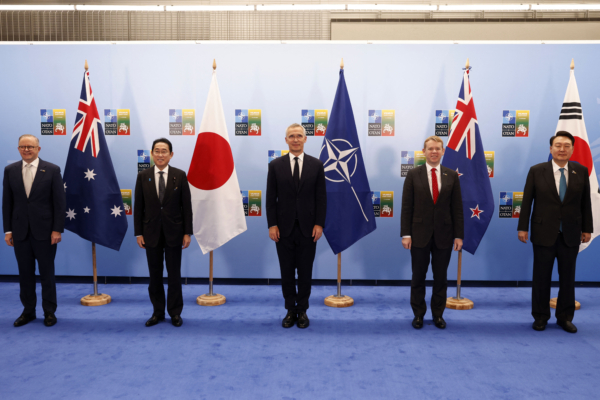NATO and its partners in the Indo-Pacific region – Japan, South Korea, Australia, and New Zealand are set to hold a meeting on Thursday (July 11) to discuss defense industry cooperation, aiming to better utilize the manufacturing capabilities of South Korea, Japan, and Australia.
According to a report by Nikkei Asia on Tuesday (July 9), Michael Carpenter, senior director for European affairs at the U.S. National Security Council, stated on Monday that European security is closely linked to security in the Indo-Pacific region, a concept often emphasized by Japanese Prime Minister Fumio Kishida.
Speaking at the Foreign Press Center in Washington on the eve of the NATO summit opening on Tuesday, Carpenter said, “Therefore, now is a crucial moment for us to coordinate on a range of issues such as resilience, combating disinformation, and defense industry cooperation.”
With several NATO member countries providing weapons and ammunition to Ukraine to counter Russia, NATO’s stockpiles in the Euro-Atlantic region are shrinking.
As a result, NATO aims to rapidly expand production by leveraging the defense industry bases of South Korea, Australia, and Japan. Data from the Stockholm International Peace Research Institute shows that from 2019 to 2023, South Korea and Australia ranked as the 10th and 16th largest arms exporting countries globally, respectively.
The Japanese government previously signed agreements with the UK and Italy to jointly develop and produce next-generation fighter jets, and recently revised regulations to allow for international arms sales.
Luis Simon, director of the Centre of Security Diplomacy and Strategy at the Brussels School of Governance, told Nikkei Asia that future cooperation marks a new development. He said, “While there have been some ideas on cooperation in emerging disruptive technologies, the concept of defense industry cooperation may be more substantive.”
This shift largely draws lessons from the conflict in Ukraine. Simon said, “The stronger the compatibility of ammunition, platforms, theories, technical standards, and defense industrial bases, the easier it is to achieve the scale needed to surpass competitors and secure victory, especially in scenarios of attrition and delay.”
He added that if cooperation is realized, it would signify significant progress in NATO’s relationship with partners in the Indo-Pacific region, “moving from the political and declaratory level to a more concrete level.”
In recent years, deepening defense industry cooperation has been a goal pursued by the United States. Defense Secretary Lloyd Austin mentioned at the Shangri-La Dialogue in Singapore last month in a speech titled ‘The New Convergence in the Indo-Pacific’ that the US and its allies and partners in the Indo-Pacific are ‘breaking’ down national barriers to better integrate defense industries.
Jennifer Kavanagh, military analysis director at the Defense Priorities think tank, stated that this progress is not surprising as both the US and its Asian and European allies “want to rapidly expand defense industrial capabilities.”
She mentioned that ways of mutual assistance include technology sharing, collaborative production, and joint ventures. Kavanagh highlighted the overlapping demand areas in precision ammunition and air defense, where cooperation holds particular value.
She noted that the US defense industry is facing pressure, and any cooperation that helps US allies enhance self-sufficiency capabilities is valuable to Washington.
Furthermore, she stated that efforts to enhance cooperation will not divert attention from the distinct priorities of US allies in Europe and Asia, “NATO focuses on threats from Russia, while Asian countries are focused on the military aggression from China (CCP).”

